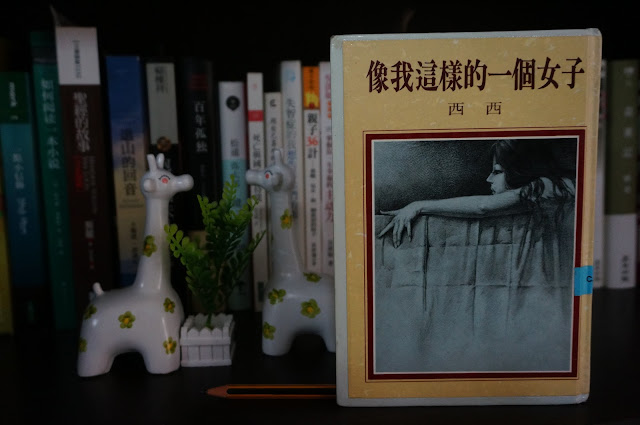坚守半世纪的裁缝手艺——胜利洋服 (Committed to the Craft for 50 Years — Shin Lee Tailor) *新加坡哪里修改衣裤?
时光流转,仿佛回到了旧日,母亲踩着缝纫机,一边缝补我们的衣衫,一边听我诉说校园趣事,那些日子如斯遥远,却令人回味。
戴眼镜的老裁缝低头踩针车,正专注于修改裤子。也戴着眼镜的裁缝夫人一边熟练地拆着西装裤裤脚,一边回答一名满头白发的男顾客:“有开,今天有开店,明天也开。”男顾客满意地点点头,转身离去。
老裁缝做服装修改,一做就是四十多年,从年轻做到现在,已将近半个世纪。“你也一样吗?”我好奇地问。裁缝夫人摇摇头,笑着说:“没有啦,我做了三十多年。”我追问:“哦,嫁给uncle了,才一起做?”她点头道:“没办法,嫁给他,他做,我也得做,不然还得请人……”这不就是传统的“夫唱妇随”吗?
夫妻俩住在附近,赶工时常在店里加班至深夜。偶尔有顾客上门,他们只愿意接那些愿意等上一星期的单子。不愁没生意,愁在只有一双手、一架老针车。
裁缝这行讲究手艺,裁缝夫人跟随先生多年,却只做些拆线这类简单活。不是她没天分,而是老裁缝一天12小时,针车几乎没停过,她哪有机会练习其他技巧?
提到中国进口的服装便宜,买衣服变得轻易,甚至不出门,只在手机上按几个键,就能把货直送家门,生意是否受到影响?两夫妻异口同声表示不会,只是定做西装裤的人少了许多。现在,只有那些有特殊需求的人,比如大肚腩、买不到合身裤的男士,才会上门求助。他们不做洋裙,主要还是接一些修改衣裤的活儿。
老裁缝学会了手艺,就自己开业吗?不是的,他先在一位亲戚的店里学艺,等亲戚要关店了,才接手生意。最早他的店开在荷兰路,后来政府要拆建,才搬迁至此。
做裁缝不仅靠手艺,更要靠眼力。幸好有老花眼镜相助,他俩六十多岁了,依旧能在店里忙活。两夫妻互相扶持,精神矍铄,看起来比实际年龄还年轻!
只是不知道,将来他们若想退休,是否有人接手?裁缝夫人笑着说,孩子倒是有表示过想来学,可孩子从小只在一旁看看,从没真正动过手,缝纫这门手艺岂能一学就会?
更何况,孩子性格外向,整天爱往外头跑,哪有耐心坐下来,细细地学这针线活儿?两夫妻辛苦了半辈子,深知行内艰辛,自然也不愿孩子走他们的老路。
在这间小店铺里,几架陪伴老裁缝大半辈子的针车安静地立于一隅,架上摆满五颜六色的线轴、各式各样的纽扣,透着岁月的痕迹。狭窄的门店里,顾客进出,有人取货、有人付款。裁缝夫人还示范了如何修改裤脚,动作娴熟。
裁缝夫妇表示,现在还是有新的洋服改装店,不过大多是新移民。“本地人哪肯做这种活儿?就算有人想做,能轻易学会吗?”裁缝夫人忍不住调侃自己:“你看看我……”
两夫妻非常亲切,百忙之中,也乐意抽空与我聊上几句。一名顾客前来取货,虽然裤脚没来得及熨好,顾客笑说:“不必熨了,我自己熨。”裁缝夫人却坚持用那只沉重的传统熨斗,把裤脚熨平了才肯交货,真敬业!
向裁缝夫妇告别时,我才想起忘了问他们的名字。“他姓龙!”裁缝夫人说。“龙田际,稻田的田,国际的际。”“谢谢龙先生,龙太太!”我回应。龙先生微笑点头,龙太太则不忘叮嘱:“有问题随时找我们哦!”我连声道谢。走出店铺,凤飞飞的老歌早已停播,活络、热闹的锦茂路巴刹与熟食中心,更人声鼎沸了。唯有“胜利洋服”店里,老针车依然“卡拉、卡拉”地响着,未曾停歇……
“Time flows like water, and before you know it, spring breezes softly return…”
An old Fong Fei-fei song drifts gently through the air, weaving a gauzy dream of nostalgia.
I’m wandering down a narrow alley beside Ghim Moh Market and Food Centre when a humble little shop catches my eye—Shin Lee Tailor.
Time folds in on itself. I’m suddenly back in the past, watching my mother at the sewing machine, mending our clothes as I chatter on about schoolyard stories. Those days feel so far away now, yet they remain vivid.
Inside, the bespectacled tailor is hunched over his machine, fully absorbed in altering a pair of trousers. His wife, also in glasses, deftly unpicks the hem of another pair while chatting with an elderly customer.
“Yes, yes, we’re open today. Tomorrow too,” she assures him. The white-haired man nods, satisfied, and heads off.
The tailor has been in this trade for over forty years—nearly half a century of stitching and altering, from youth to now.
“And you? Same story?” I ask the tailor’s wife.
She shakes her head with a smile. “Not that long. A little over thirty years.”
“Oh, so you married Uncle and joined in after that?”
She nods. “Had no choice—married him, he was doing this, so I had to do it too. Otherwise, we’d have to hire someone…” A typical example of the old saying: when you marry the man, you marry the life.
They live nearby and often work late into the night to meet deadlines. Walk-in customers still show up now and then, but they only take on jobs from those willing to wait a week. Business isn’t the problem—but just two pairs of hands and a single old sewing machine.
Tailoring is a craft. Despite working alongside her husband for decades, the tailor’s wife still only handles simpler tasks like seam-ripping. It’s not for lack of talent—it’s just that her husband works twelve-hour days, the machine humming without rest. Where would she find the time to master more?
I ask if the wave of cheap clothing from China and the convenience of online shopping have affected their business.
They reply in unison: “Not really.” But they admit that orders for custom trousers have declined. These days, only customers with special needs—say, men with large stomachs who can’t find a good fit—still come in. They don’t make dresses, just basic alterations.
Did Uncle start his own shop after learning the trade?
Not exactly. He first apprenticed at a relative’s store. When that shop was about to close, he took it over. Their original location was on Holland Road, but they moved here when the area was redeveloped.
Tailoring takes more than skill—it requires a sharp eye. Thankfully, reading glasses help. Now in their sixties, the couple still work with quiet determination, supporting each other through the long hours. They seem younger than their age—resilient, grounded.
But I wonder—when they’re ready to retire, will someone take over?
The tailor’s wife laughs. One of their children once expressed interest, but only ever watched from the sidelines—never threaded a needle. Sewing isn’t something you can learn overnight.
Besides, their child is an extrovert, always out and about. Sitting still, stitching seam after seam—where’s the patience for that? After a lifetime in the trade, the couple know it’s not an easy career. Naturally, they wouldn’t wish it on the next generation.
Inside the little shop, sewing machines that have accompanied Uncle for most of his life sit quietly in the corners. Shelves are lined with colourful spools of thread, jars of mismatched buttons—all bearing the patina of time. Customers come and go, some collecting orders, others making payments. The tailor’s wife demonstrates how to alter a hem, her hands practiced and precise.
They mention that while new tailoring shops still open, most are run by recent immigrants.
“Locals?” she scoffs gently. “Who wants to do this kind of work? Even if someone did, you think they could just pick it up?” Then, with a grin, she adds, “Just look at me!”
Despite their busy schedule, the couple are warm and welcoming, always happy to pause for a brief chat.
A customer arrives to pick up his trousers. The hem hasn’t been pressed yet, but he laughs and says, “No worries—I’ll iron it myself.”
Still, the tailor’s wife insists on doing it properly. She reaches for a heavy, old-fashioned iron and flattens the hem to perfection before handing it over. That’s dedication.
As I prepare to leave, it strikes me—I never asked their names.
“He’s Mr. Long,” she tells me. “Long Tianji—‘Tian’ as in rice field, and ‘Ji’ as in international.”
“Thank you, Mr. and Mrs. Long,” I say.
Mr. Long nods with a quiet smile. Mrs. Long calls out, “If there’s ever anything, come find us!”
I step outside. Fong Fei-fei’s song has long since faded, replaced by the lively buzz of the Ghim Moh hawker centre.
But inside Shin Lee Tailor, the old sewing machine hums on—ka-la, ka-la—never missing a beat.




评论
发表评论